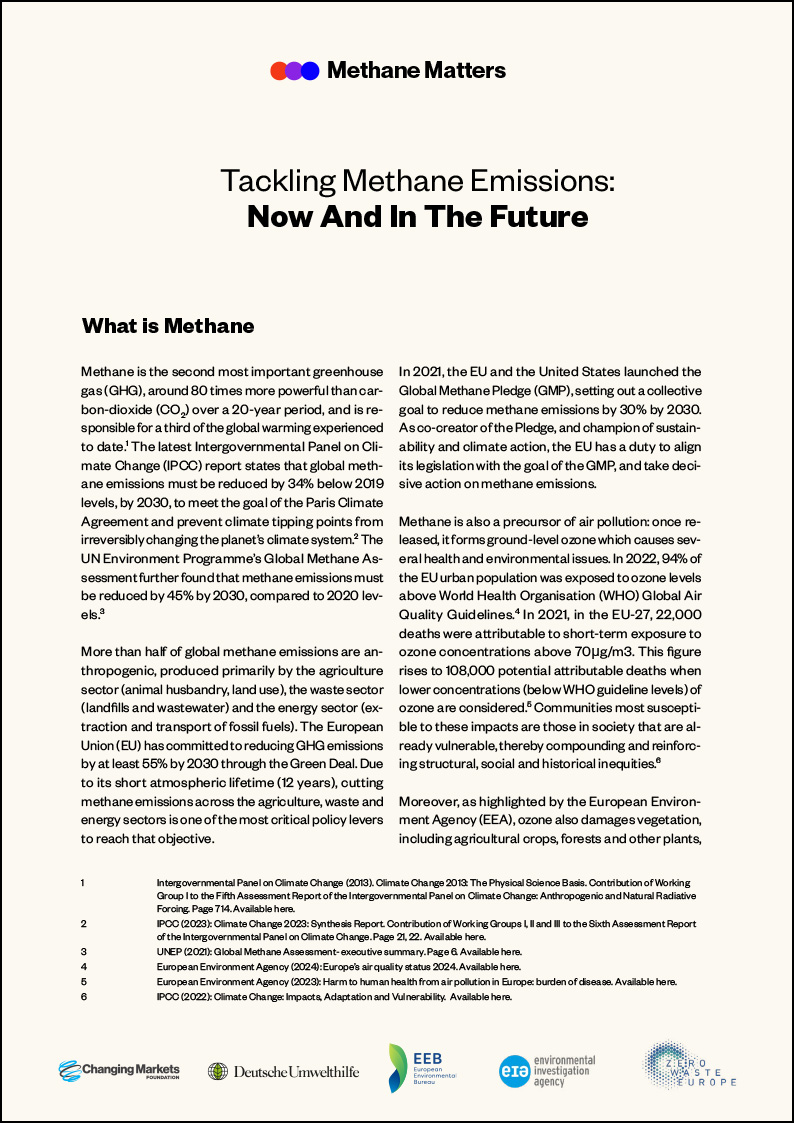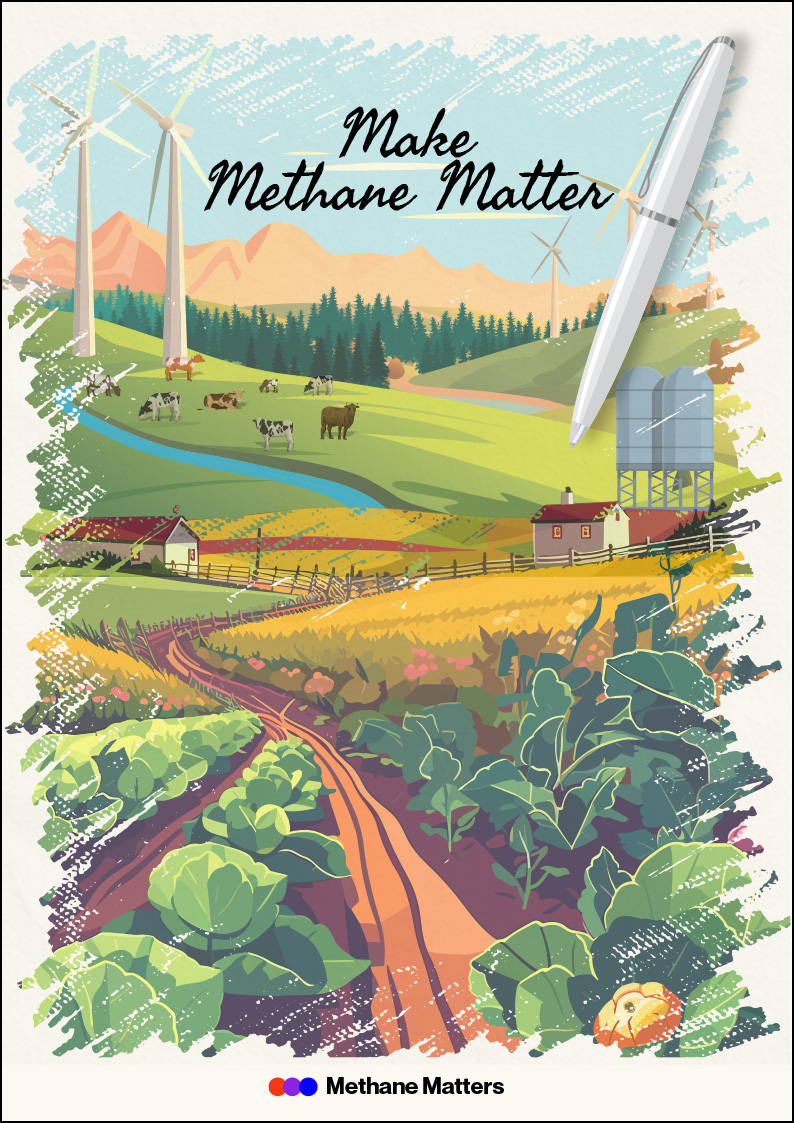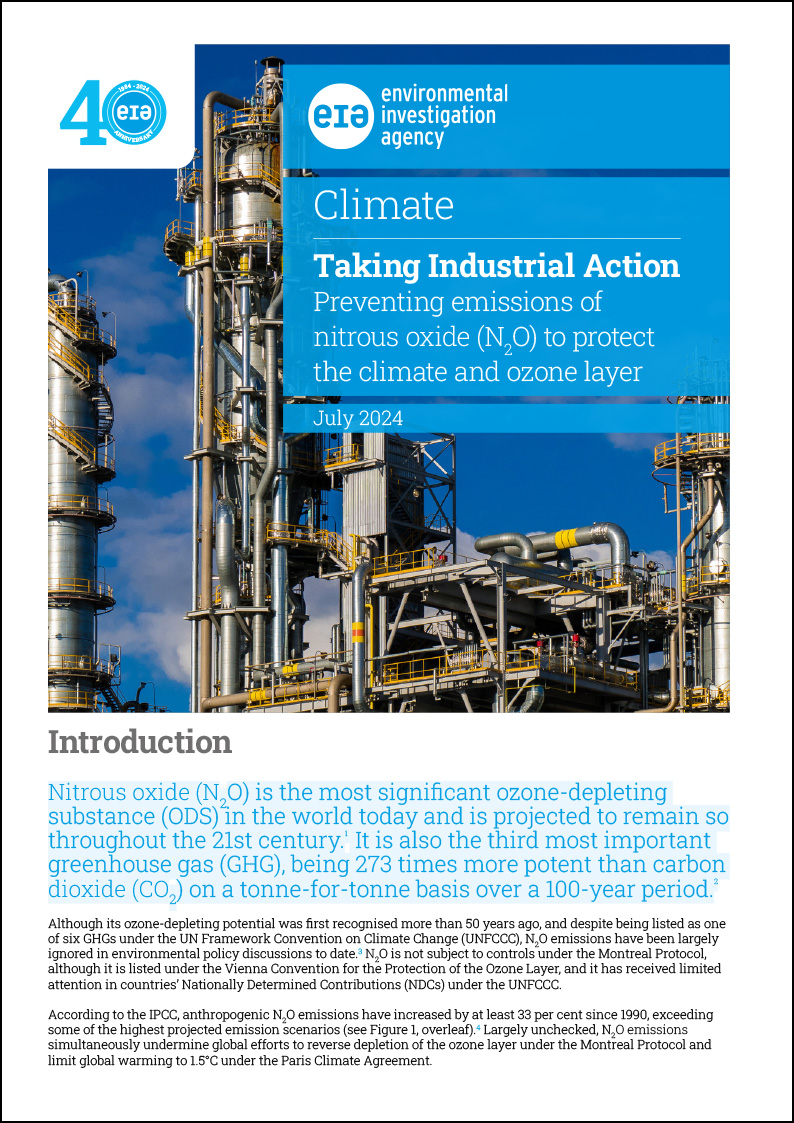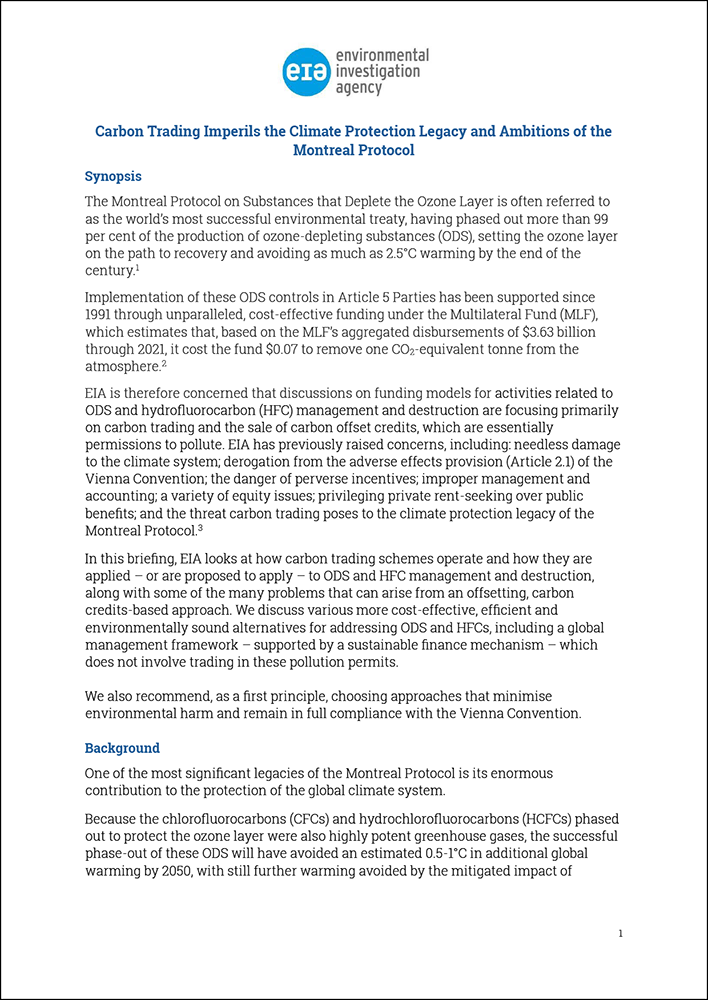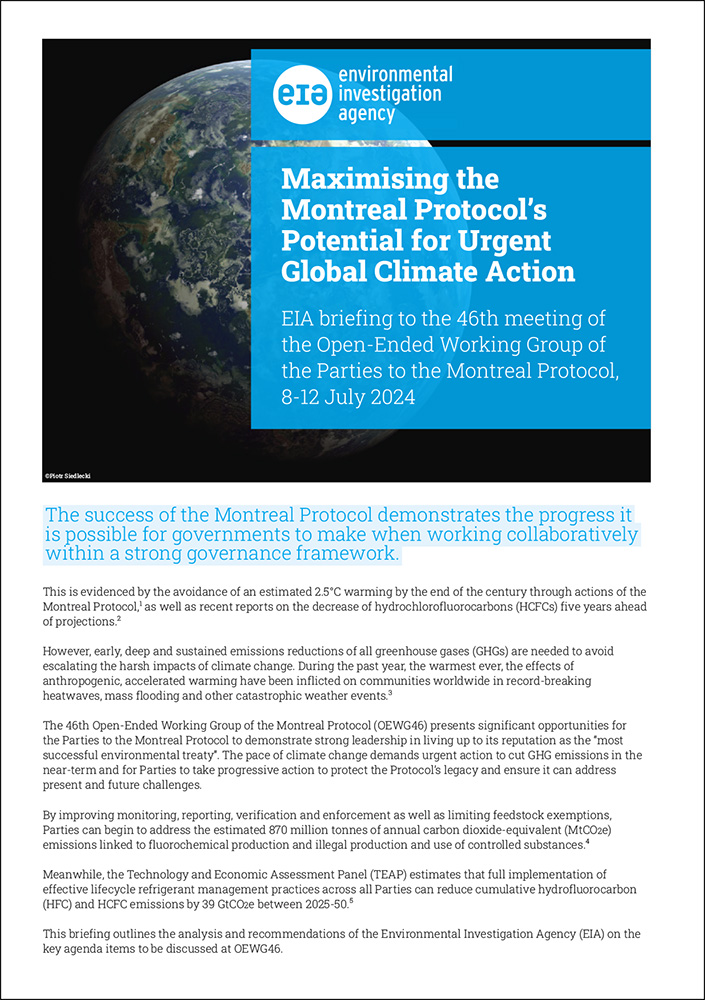
Polluting the Protocol
The Montreal Protocol on Substances that Deplete the Ozone Layer has a uniquely successful legacy. For almost four decades, the treaty has been instrumental in protecting the ozone layer and combating climate change, securing the successive phaseout of more than 99 per cent of the production of controlled ozone-depleting substances (ODS).
- Areas of work:
- Campaigns:



